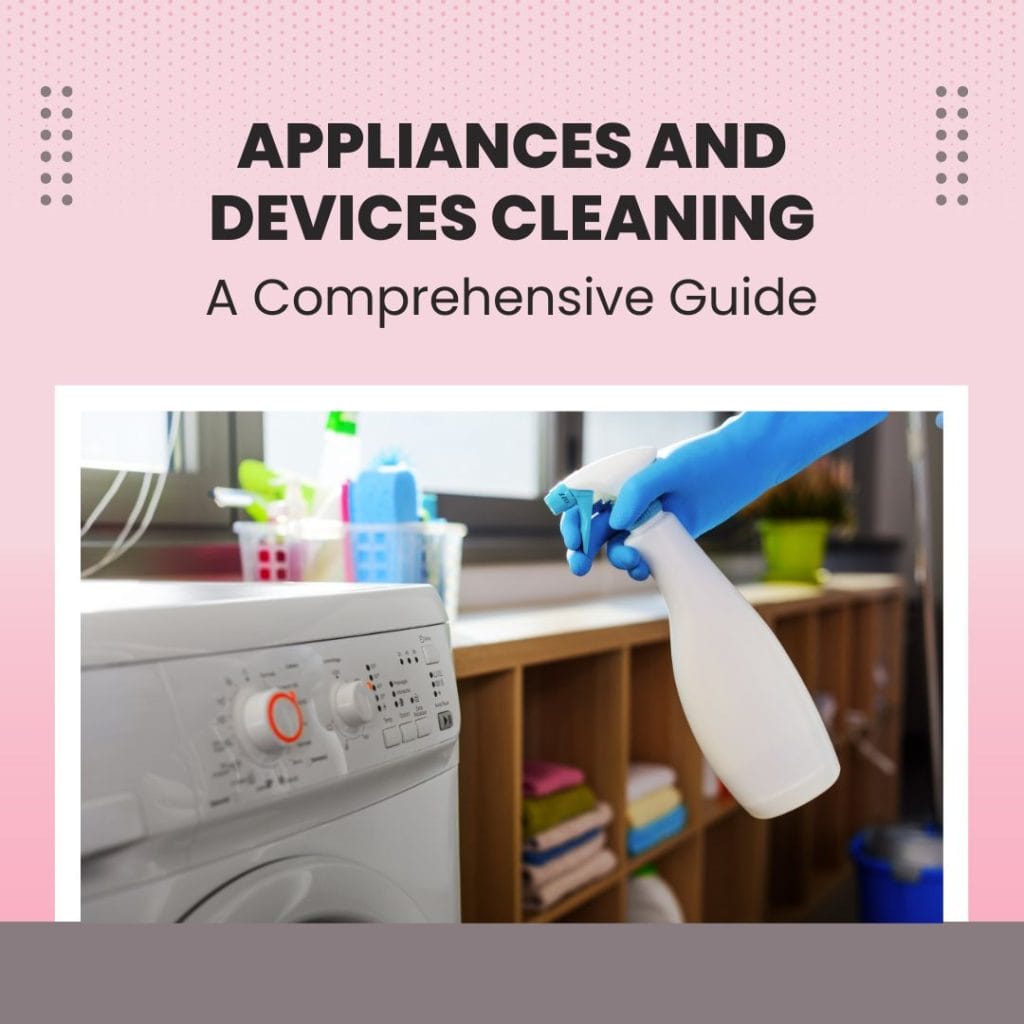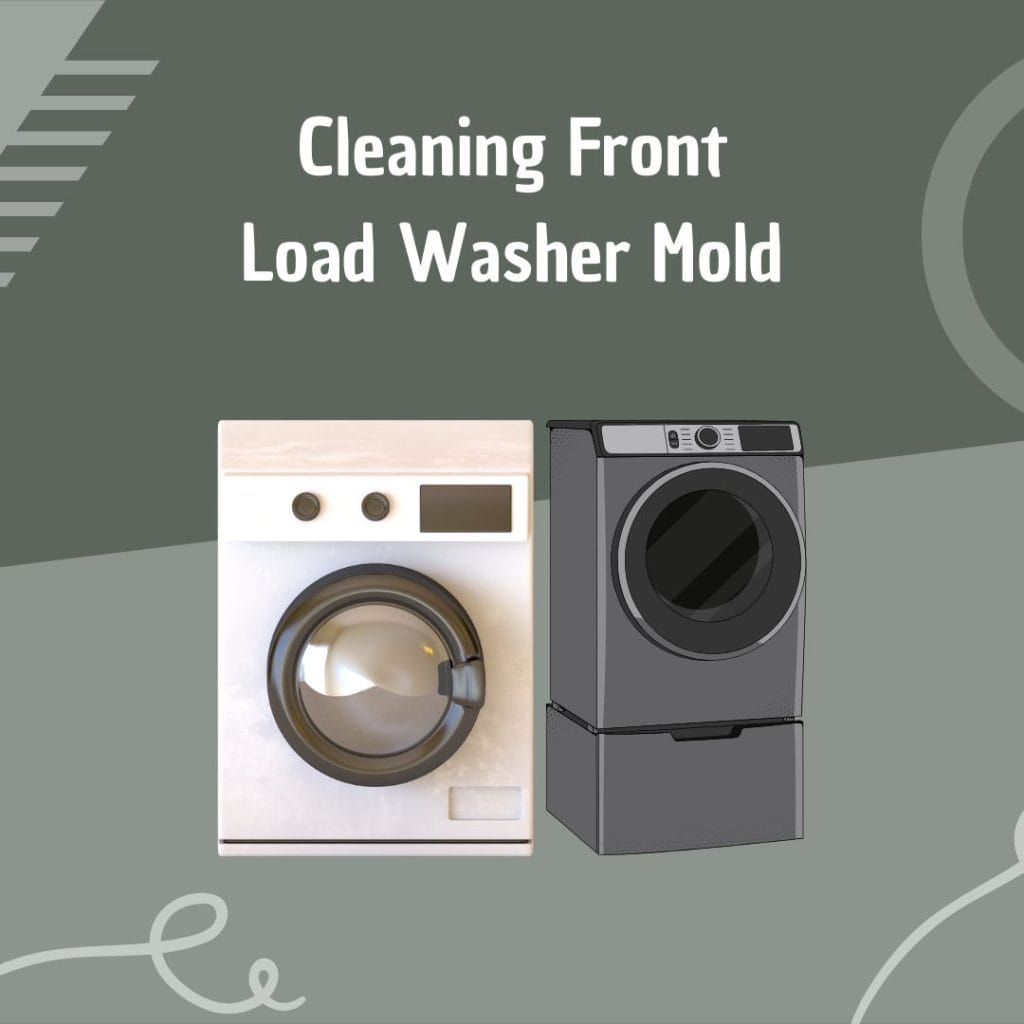Mold in front load washers can be a pervasive problem due to the design of front load washing machines. Not only does this cause a foul odor, but it can also lead to clothing coming out of the wash still dirty or covered in residue. Fortunately, there are simple and effective methods to combat this issue. This guide will walk you through the steps to eliminate mold from your front load washer and provide tips on how to prevent it from reoccurring.
Understanding Mold in Front Load Washers
Mold in inside the washing machine door is primarily caused by the accumulation of moisture in certain parts of the machine. Unlike top load washers, front load washers have airtight, watertight doors that do not allow moisture to escape. When the washer is not in use, this trapped humidity becomes a breeding ground for mold and mildew. Furthermore, the use of cold water for washing, the use of liquid fabric softener, and not allowing the washer to dry out between loads can all contribute to mold growth. Lastly, detergents and fabric softeners can create a high pH environment within the washer, which can promote the growth of these unwanted fungi.
Front load washers are more susceptible to mold growth due to their design and function characteristics. Firstly, the door gasket, which ensures the machine is watertight, tends to trap water, creating an ideal environment for mold growth.
Moreover, the drum where the clothes are washed also retains water in its folds and crevices, further promoting the growth of mold. Secondly, front load washers use less water than their top load counterparts, which can lead to a buildup of soap scum and debris in the machine, providing a food source for mold spores. Finally, most users of front load washers keep the doors closed when not in use, unknowingly creating a damp, dark, and warm environment that is perfect for mold to thrive.
Gain insights into different cleaning methods with How to Use a Three Compartment Sink.
For other kitchen appliance maintenance, explore How to Clean a Dishwasher.
How to Identify Mold in Your Washer
Mold in front load washing machine can be identified through several telltale signs. One of the most obvious indications is a musty or foul smell emanating from the machine. This is due to the fungal growth and can be particularly noticeable when the machine has been closed for a while. Another sign is the presence of black spots or stains in the drum, rubber seal, or door gasket of the washer. These are mold colonies and can often be hard to clean.
Health Risks With Mold in Front Load Washers
Mold in front load washers is not just an aesthetic or operational issue; it also poses several health risks. Exposure to mold spores can lead to a variety of respiratory problems, including wheezing, difficulty breathing, and persistent cough. Some people may also experience allergic reactions such as sneezing, red eyes, and skin rash. In severe cases, mold exposure can lead to more serious health issues like asthma or pneumonia.
Consider learning Correct Steps for Cleaning & Sanitizing Utensils by Hand for comprehensive cleaning approaches.
Explore specialized item care with Essential Makeup Brush Cleaning.
Step-by-Step Guide to Cleaning Mold from Front Load Washer
Cleaning mold from your front load washing machine does not require professional help or expensive tools – it’s a task you can tackle with household items and a bit of elbow grease. Here is a step-by-step guide that will help you remove mold effectively in cleaning cycle and restore your machine to its best condition.
Learn about appliance maintenance risks with Understanding Risks of Self-Cleaning Oven Interruption.
Materials for Cleaning Mold in Front Load Washers
To effectively clean mold from your front load washing machines, you will need the following materials:
- White vinegar
- Baking soda
- A spray bottle
- A microfiber cloth or sponge
- A toothbrush
- Rubber gloves
Learn about cleaning other appliances with How to Use Hoover Carpet Cleaning Machines.
Expand your cleaning knowledge with our article on Effective Oven Cleaning Methods.
Step-by-Step Process
Begin by mixing equal parts of white vinegar and water in a spray bottle.
- Open the washer door and spray the vinegar solution all over the drum, rubber gasket, and door.
- Let the solution sit for about 15 minutes to break up the mold and mildew.
- After 15 minutes, scrub the rubber gasket and door with a toothbrush, focusing on any visible mold spots.
- For the drum, use a damp cloth or sponge to wipe down the washer drum.
- Once all areas have been scrubbed, run a hot water cycle with two cups of vinegar to thoroughly rinse the washer.
- After the cycle, sprinkle a half cup of baking soda in the drum and run another hot water cycle.
- At the end of the cycle, wipe down the inside of the washer one last time with a dry cloth and leave the door open to allow it to dry completely.
Tips for Effective Cleaning
- Always wear rubber gloves when cleaning mold to protect your skin.
- Regularly inspect and clean your washer monthly to prevent mold buildup.
- Always leave the washer door open after a load to allow it to dry out.
- Avoid using liquid fabric softeners, which can contribute to mold growth.
- Use high-efficiency (HE) detergents as they produce fewer suds, reducing soap scum buildup.
Maintain your appliances with tips from How to Clean Your Washing Machine.
Future Prevention From Mold Front Load Washers
To prevent mold growth in front loading washers is relatively simple once you understand the root causes. The first step is to always leave the door of your washer open when not in use, allowing air to circulate and dry out any moisture that may be present. Additionally, it’s advisable to clean the door gasket regularly with a solution of equal parts water and vinegar to remove any potential mold buildup.
Furthermore, it’s important to limit the use of liquid fabric softener in front load washers as this can leave a residue that contributes to mold growth. Instead, opt for dryer sheets or add fabric softener during the wash cycle when using your washer.
Lastly, periodically cleaning and maintaining your washer is crucial in preventing mold growth. This includes running a cleaning cycle with hot water and bleach or vinegar, as well as regularly removing and cleaning the detergent dispenser drawer.
By following these simple steps, you can significantly reduce the risk of mold growth in your front load washer and enjoy fresh-smelling, clean laundry every time. Remember to also keep an eye out for any signs of mold, such as a musty odor or visible spots, and address them immediately to prevent further spread.
For additional practical tips on maintaining appliances, explore Appliance & Device Cleaning Tips.
All in all, understanding the root causes of mold growth and implementing preventative measures can help keep your front load washer clean and free from unwanted fungi. So be sure to regularly maintain your machine and always leave the door open when not in use to avoid any future mold troubles. Happy cleaning!
Understand the costs of professional cleaning services in How Much Does Dryer Vent Cleaning Cost.
Discover innovative cleaning solutions like the Tang Dishwasher Cleaning Hack for your appliances.
Conclusion
By maintaining a clean and dry environment in your front load washer, you can effectively prevent the growth of mold and mildew. This not only ensures that your laundry is clean and fresh but also reduces the risk of health complications associated with mold exposure. Regular inspection and cleaning, combined with the use of appropriate detergents and practices, can help to eliminate this issue, extending the lifespan of your appliance and safeguarding your well-being.











